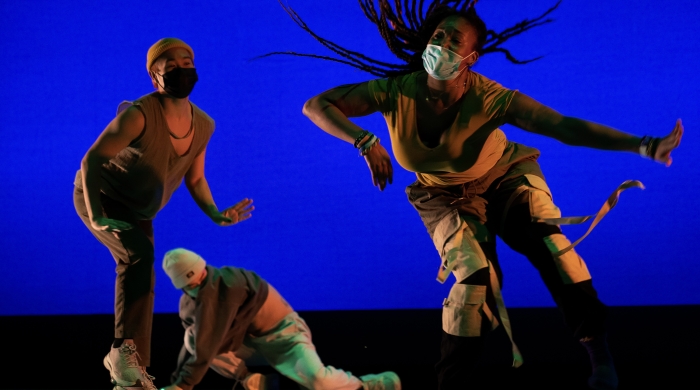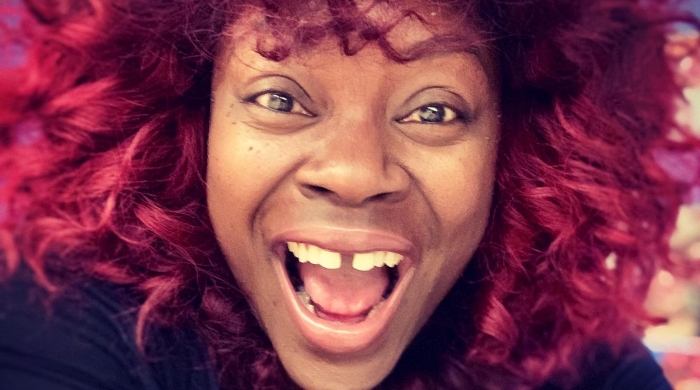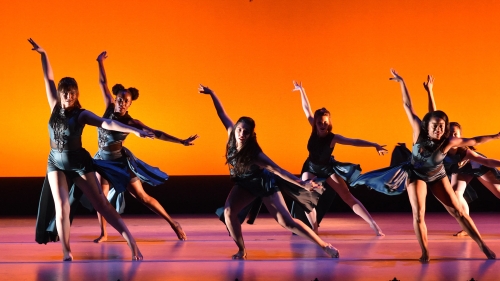Prior to the late 1920s, dance was considered more of a pastime than an academic subject; then it began being included as a part of physical education in schools, which was also a rather fledgling subject at the time.
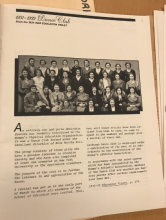
A yearbook page featuring the 1931-1932 Dance Club, directed by Martha Hill.
“Physical education was just being identified as a subject of study in schools in the ’20s, and dance was added to some curricula,” says Deborah Damast, director of the NYU Steinhardt Dance Education program and a clinical associate professor. “The physical education department at NYU was started in 1925, and in 1930, Martha Hill started teaching dance as part of it.”
Hill was one of the early dancers with Martha Graham’s company, herself a visionary in the dance world. Soon, Hill realized she didn’t have time for both, so she left Graham’s dance company and came to teach at NYU full time.
“Hill's goal was to include dance as a performing art in higher education,” says Damast, who was honored with the 2023 Mid-Career Award by the Martha Hill Foundation this spring.
Hill soon brought the sensibility of modern dance into academia, founding a dance club focused on student work in 1931 and then introducing NYU’s first dance curriculum in 1932 – making it one of America’s oldest dance programs.
Bringing Dance into the Community
In 1951, Hill left NYU to become Juilliard’s first director of dance, after which the program began to take on more of an educational aspect. The next director of the Dance Education program at NYU was Gladys Fleming, whose career was focused on working with young children and bringing dance education into schools.
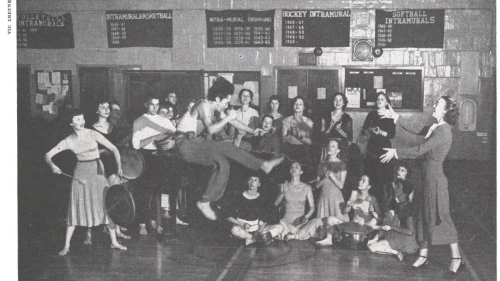
Martha Hill directing a lively modern dance session in 1951.
“In the ’50s, NYU began shifting its focus to the education of children in dance,” says Damast. “They offered classes in dance history, the philosophy of education and aesthetics, and administration in public schools – they were looking at dance as an art form, but also at pedagogy. In addition, they moved all their courses to afternoons or evenings so students who were teaching full time could attend.”
Around this time, NYU’s program also began bringing dance into the community – a nexus that took shape in the founding of the Kaleidoscope Dancers. This professional and academic service learning dance company sees Steinhardt students collaboratively designing interactive lesson plans and performances with children in K–12 settings.
“Over two semesters, our Kaleidoscope students learn about lesson planning, culturally responsible pedagogy, and repertoire,” says Damast, who is the company’s current artistic director. “Graduate students work with existing teachers in partner schools – many of whom are Dance Education alumni and learn to integrate kids and grownups together into dance-making and performing.”
Working with different populations in a range of schools, Kaleidoscope is critical for showing young people that dance is open to them. “Some of the children are not aware that dance can be a career option or a course of study in college,” says Damast. “Kaleidoscope shows them that they belong – in dance and at NYU.”
Room for All Voices
By the 1970s, Dance Education had become its own program engaging in extensive research in dance, pedagogy, and the creative arts. This exploration led to an influx of new styles, from postmodern to a range of non-Western forms.
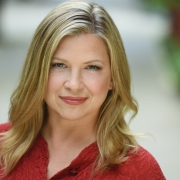
We are dedicated to honoring all types of dance, developing new ideas, and disseminating them in ways that work for everyone. By opening up the world for our students, we can only begin to imagine what they will accomplish for their own students.
“Students were given so many more opportunities to study lots of different kinds of dance within the curriculum: American modern dance, Japanese dance, African dance, flamenco, dance therapy, dance anthropology, and writing for dance,” says Damast. “These styles were once considered supplemental, but then we began centering these kinds of diverse experiences.”
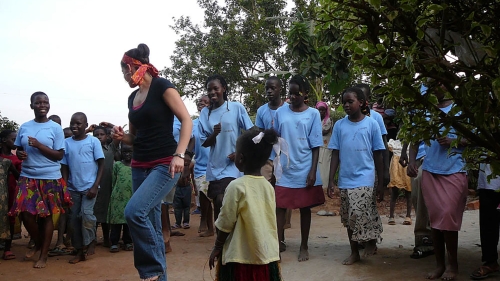
Uganda Dance Education participant dancing with school children.
This kind of inclusive viewpoint of dance and dance education has expanded: the program has been engaged in a collaborative partnership with dancers in Uganda for nearly two decades.
“In 2005, we were approached by Sylvia Nagginda Luswata, Nnabagereka [Queen] of the Buganda Kingdom, who earned her master’s degree at NYU,” says Damast. “She wanted to start a ballet school and was interested in professional development for teachers in her country, as well as outreach ideas, so the Kaleidoscope model of cross-cultural learning was a great fit.”
The Nnabagereka came to New York and saw the Kaleidoscope Dancers and a group of second graders create and perform a West African dance. Damast and the Ugandan ballet school’s director coordinated over the next year, creating a study abroad program in which Dance Education students travel to Uganda for two weeks, working with teams of teachers and students on both American and Ugandan dance styles.
On the horizon is another study abroad collaboration with partners in New Mexico who honor global-Indigenous and intercultural relationships and environmental consciousness with their work.
The Revolution Continues
Over the last decade or so, the Dance Education program has added more diverse and distinctive programming that are unique in the world of dance and dance education. The MA in Teaching Dance in the Professions has two distinguishing tracks: one that is a partnership with the American Ballet Theatre (ABT), and the other that centers on an intensive study of the evolution of dances of the African Diaspora.
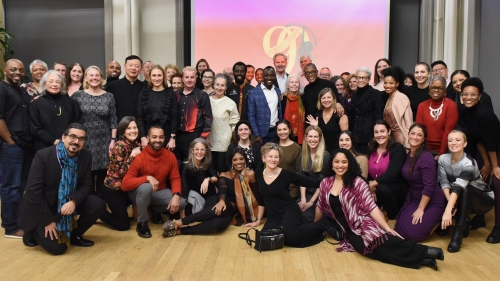
Dance Education's 90th-anniversary celebration.
“The beautiful thing is that all of these students end up taking classes together, so at some point, everyone is learning something they don’t know,” says Damast. “We’ve done away with auditions for all tracks except for ABT, because we want to make sure we’re not up in an ivory tower deciding who is allowed to learn to dance and teach and who can’t. We’re working to marry tradition and innovation to be leaders in our field.”
While the program has grown and changed over the last 90 years, some things have stayed the same: the commitment to the synergy between dance and dance education, the synthesis of the professional world of dance with the importance of dance in school, and a commitment to equity in practice.
“We are dedicated to honoring all types of dance, developing new ideas, and disseminating them in ways that work for everyone,” says Damast. “By opening up the world for our students, we can only begin to imagine what they will accomplish for their own students.”
Related Articles
NY Marathon Inspires Dance Theme
On Your Mark, a dance choreographed by first year Dance Education student Sky Morgan, was inspired by the NY Marathon. The piece will be one of 14 performed in the Master’s Dance Concert on April 21 and 22 at the Frederick Leowe Theatre.
Dance Education Celebrates its 90th Anniversary
This year marks the 90th anniversary of the Dance Education program. Celebrations include the 2022 Distinguished Faculty Dance Concert, featuring original dances created by our faculty and performed by students and alumni.
"I am Hip Hop!" An Interview with Dance Educator Kim Elliott
Alum Kim Elliott speaks about her life and work.


